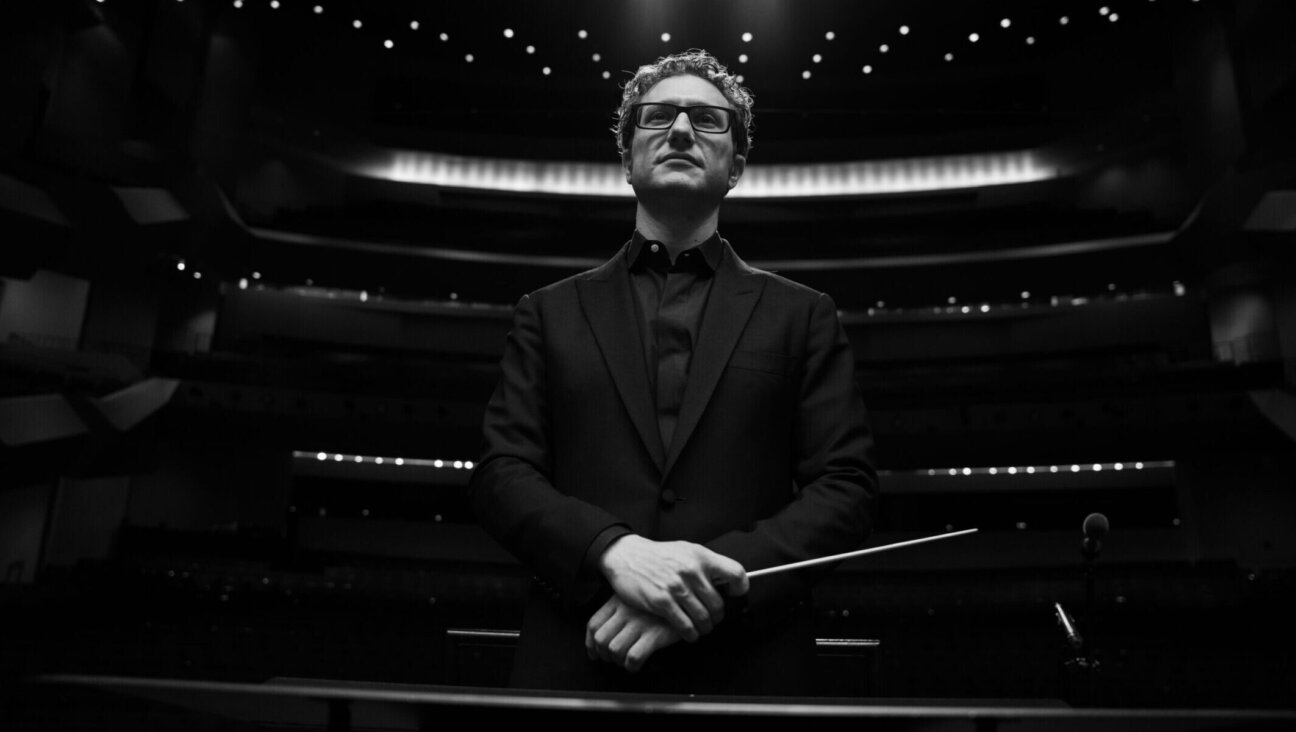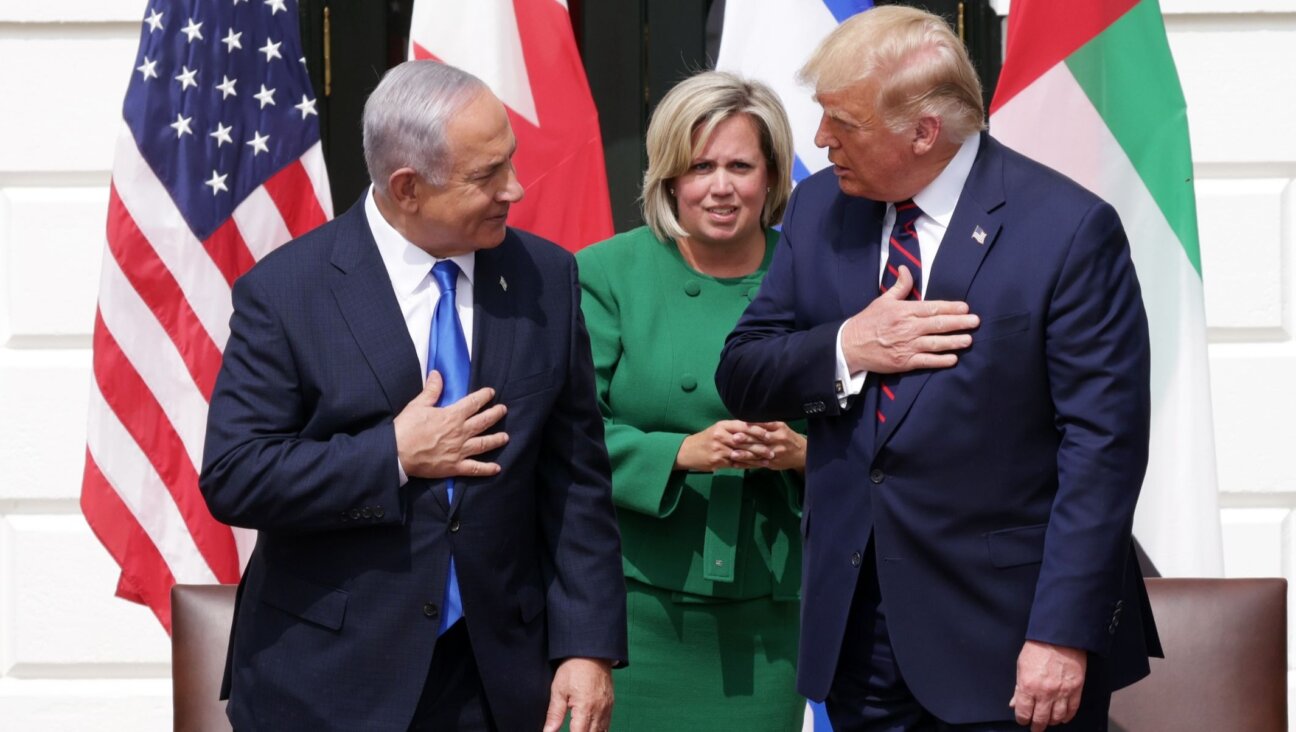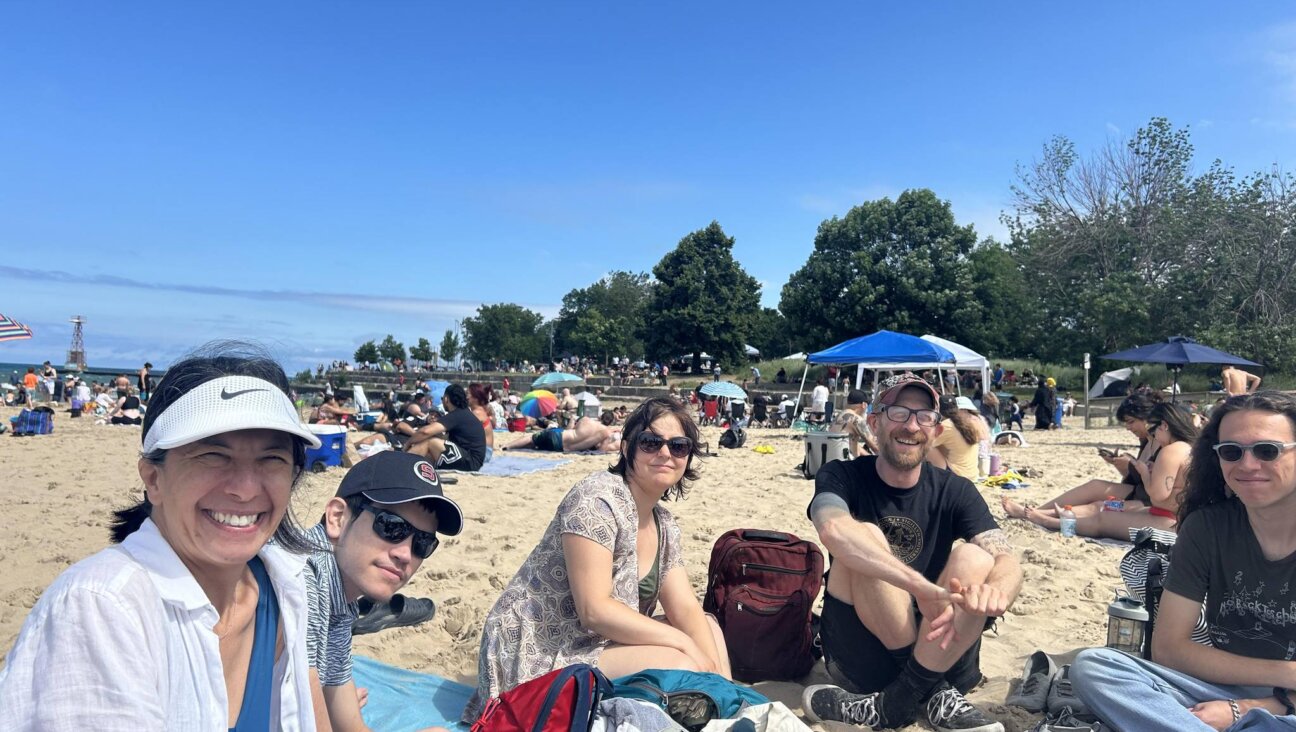Paul Simon Gets Exceedingly Jewish At His Penultimate Concert

Paul Simon Image by Getty Images
The first major Jewish moment of the first of two “farewell concerts” by Paul Simon at Madison Square Garden last night (the second takes place tonight and the curtain comes down on the final show of the “Homeward Bound Farewell Tour” at Flushing Meadows Corona Park on Saturday night) occurred at an unlikely moment. It wasn’t during one of his more obviously Jewish numbers – see my recent article “Paul Simon’s 7 Most Jewish Songs.” Rather, it came about eight songs into the show, when Simon and his spectacular ensemble performed his 1972 hit, “Me and Julio Down by the Schoolyard.” There, hiding in plain sight, was a big, fat, juicy Yiddish interjection by the narrator’s father, suggesting that the “me” in the title may just have been based on Simon himself. I offer for your consideration:
The mama looked down and spit on the ground
Every time my name gets mentioned
The papa said, “Oy, if I get that boy
I’m gonna stick him in the house of detention.”
Maybe I’m imagining things, but Simon really seemed to dig into that “Oy” with religious fervor, as if he had spent the previous day, which happened to be Yom Kippur, in synagogue (indeed, he did not perform on Tuesday or Wednesday night), and the aftereffects of the accumulation of all the “al chets” and the “who by fires” came out in one big, explosive “OY!”
Simon’s 25-song, two-and-a-half hour concert touched on all aspects of his career, digging back all the way to his teen years playing music in the 1950s through the Simon & Garfunkel years, the commercial successes of his 1970s solo work, the world-music explorations of the 1980s and ‘90s, and the experimental sounds and poetic precision that have marked his new recordings in the 21st century. With the assistance of his phenomenal band — an ever-morphing group equally adept at honkytonk, Afropop, smooth jazz, avant-classical Minimalism, Latin rhythms, and funk — Simon played recontextualized versions of deep catalog numbers including “Can’t Run But,” “René and Georgette Magritte With Their Dog After The War,” and “Dazzling Blue” alongside crowd-pleasing hits including “You Can Call Me Al,” “Boy in the Bubble” and “Kodachrome.”
If one theme clearly emerged from the evening — and so very appropriately, given the location and the occasion — it was that Paul Simon is rock music’s poet laureate of New York City. Granted, you hear his songs with different ears when you are a fellow New Yorker and he’s performing in his hometown. But Simon didn’t adapt his setlist to milk undue affection from his fellow Gothamites. His songs are simply and always have been strewn with details drawn from life in the five boroughs. And the crowd, of course, did take every opportunity to hoot and holler and appreciate lyrical references to Christopher Street, the Statue of Liberty, Rosie the queen of Corona, the Lone Star Café, New York City winters … even “the whores on Seventh Avenue” got their hearty round of applause. Simon’s songs even acknowledge the reality of the bridge and tunnel crowd, with references to the New Jersey Turnpike and Long Island’s Montauk Highway.
In the fitting final number of the concert, the bard of New York City played his first number-one hit, the song that launched him into the pop-rock pantheon alongside the Beatles and Bob Dylan. It’s also a song that quite literally combines New York City (and his family’s own) history and imagery with the prophetic inclination, when, in the closing lines of “The Sound of Silence,” Simon sang, “The words of the prophets are written on the subway walls, and tenement halls….”
And with that, Simon took his final bow, and the audience replied with their final amen.
Seth Rogovoy is a contributing editor at the Forward and the author of “Bob Dylan: Prophet Mystic Poet” (Scribner, 2009).
A message from our Publisher & CEO Rachel Fishman Feddersen

I hope you appreciated this article. Before you go, I’d like to ask you to please support the Forward’s award-winning, nonprofit journalism so that we can be prepared for whatever news 2025 brings.
At a time when other newsrooms are closing or cutting back, the Forward has removed its paywall and invested additional resources to report on the ground from Israel and around the U.S. on the impact of the war, rising antisemitism and polarized discourse.
Readers like you make it all possible. Support our work by becoming a Forward Member and connect with our journalism and your community.
— Rachel Fishman Feddersen, Publisher and CEO























